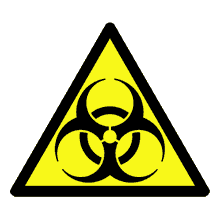What toxins actually are

The idea of “toxins” is usually used as a tactic to scare people into buying de-toxifying snake oil of one sort or another. What is meant by it? The folks who sell detoxification are notoriously vague.
I delved into this while writing an update for my Epsom salts article recently, and it ended up being quite useful in a couple other articles too: my main toxins page (duh), of course, and my article picking apart the popular practice of promoting hydration after massage.
•
A poison is literally any harmful substance, and even something safe in typical doses becomes a poison in overdose (so you can be poisoned by either lots of water or a minuscule amount of lead). Toxins are technically poisons produced by living things, like venom or metabolic wastes, but informally the word is synonymous with poison.
There’s a staggering variety of poisons/toxins, but
Pollutants are poisons in the environment around us that get into us from the outside. The most obvious specific candidates would be the persistent organic pollutants like pesticides, flame retardants, and polychlorinated biphenyls (PCBs, now banned, but formerly ubiquitous in many plastics). Lead is also still an alarmingly common environmental poison, and still does more harm than any other known chemical hazard. There are major open scientific questions about the threat of the forever chemicals (the PFAS) and microplastics. And, of course, a huge source of poisoning is really ordinary: smog! And food additives are a minor subcategory of “pollutant,” massively over-hyped, but there probably are a few problematic chemicals in our diet.
Metabolic “wastes” is a much murkier category, because most of them aren’t actually wastes at all. Cellular chemistry produces a lot of molecules, with many fates. Technically these are toxins because they are biologically produced and they would be harmful in abnormal concentrations… but they are normal products of biology, and so most of them are either safely excreted, or actually re-used and re-cycled. As in the rest of nature, not much in cellular chemistry is wasted. Lactic acid is the ultimate example: misunderstood for decades, even by many people who should know better, lactic acid is not a persistent waste product and you wouldn’t want to “flush” it or “suck” it out of your muscles even if you could. If the mythology and misconceptions about lactic acid are this bad, it’s unlikely that there’s some other metabolic waste that is a better candidate for something that is regularly poisoning us and needs to be purged.
Read more in any of these articles:
- Chronic, Subtle, Systemic Inflammation — One possible sneaky cause of puzzling chronic pain
- Toxins, Schmoxins! — The idea of “toxins” is used to scare people into buying snake oil
- Does Epsom Salt Work? — The science and mythology of Epsom salt bathing for recovery from muscle pain, soreness, or injury
- Why Drink Water After Massage? — No reason! Massage therapy does not flush toxins into the bloodstream, and water wouldn’t help if it did